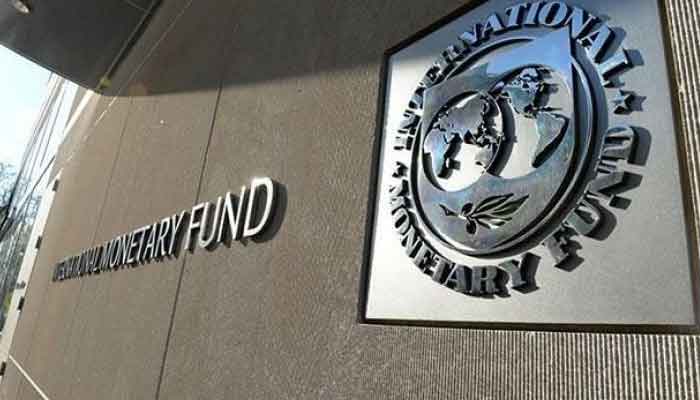The good, the bad and the ugly projections of Finance Ministry
Projected assumptive figures of exchange rate (PKR/US$), debt to GDP, public debt and fiscal deficit for the next three years, show some encouraging projections as well as a few disappointing ones.
ISLAMABAD: Although details of the IMF deal are not known even to the federal ministers, a few months old finance ministry document shows what was being discussed then with the Fund officials.
The document shows the projection of US$ reaching Rs150 by end June 2019, Rs159 in 2020 and Rs168.5 in 2021. The document also forecast Public Debt adding up by Rs11,000 billion in three years.
Projected assumptive figures of exchange rate (PKR/US$), debt to GDP, public debt and fiscal deficit for the next three years, show some encouraging projections as well as a few disappointing ones.
For example, the exchange rate which was Rs121.5 against one US dollar by end of June 2018, was projected to go further up to Rs150 against one dollar by end June 2019; Rs159 by end June 2020 and Rs168.5 by end June 2021.
Debt to GDP which was 70.2% in 2018, was projected to 75% in 2019, 71.30% in 2020 and 69.70% in 2021.
Similarly, the Public Debt which was Rs24,949 billion in 2018, was forecasted for the next three years as Rs29,408 billion in 2019; Rs32,581 billion in 2020; and Rs35,938 billion in 2021. The GDP which was Rs34,396 billion in 2018, was projected to Rs39,220 in 2019; Rs45,725 billion in 2020; and Rs51,536 billion in 2021.
Fiscal deficit, which was calculated at 6.6% of GDP in 2018, was projected as 5.6% in 2019; 5.3% in 2020; and 4.9% in 2021.
According to the document, “Assumptions regarding GDP, Fiscal Deficit and Exchange rate was provided to DPCO (Debt Policy and Coordination Office) during last IMF mission and any change in these assumptions will change the calculated projection of Debt to DGP ratio.”
The above assumptions were made by the finance ministry few months back when Asad Umar was the finance minister. It is not yet known whether the things had improved after Umar departure and following the arrival of Hafeez Shaikh but those who were involved in the IMF talks were not really happy as the things concluded.
When The News contacted two top officials of the ministry, they were not available.
Adviser to PM on Finance Abdul Hafeez Shaikh, however, told a press conference in Karachi on Thursday that the IMF has agreed to lend $6 billion at comparatively cheaper mark-up rate, which would help in acquiring another $2-3 billion from World Bank and Asian Development Bank at low interest rate.
Shaikh said that the loan agreement would send a strong message to countries around the world that Pakistan has decided to implement fiscal and monetary discipline, while the loan programme would help collect higher revenue.
Shaikh claimed, “This (IMF programme) is a good signal to foreign investors, cross-border trading partner countries and friendly countries to increase foreign investment in Pakistan. The IMF economic stabilisation programme would help facilitate the underserved section of society and create employment opportunities going forward,” he claimed.
He added that the IMF programme carries three-four salient features that would be beneficial for the poor section of the society, especially the upward revision in power tariff as it exempts those who use less than 300 units a month.
-
 Gaten Matarazzo On Unbreakable Bonds Of 'Stranger Things'
Gaten Matarazzo On Unbreakable Bonds Of 'Stranger Things' -
 Beyonce, Jay-Z's Daughter Blue Ivy Carter's Massive Fortune Taking Shape At 14?
Beyonce, Jay-Z's Daughter Blue Ivy Carter's Massive Fortune Taking Shape At 14? -
 Meghan Markle Fulfills Fan Wish As She Joins Viral 2106 Trend
Meghan Markle Fulfills Fan Wish As She Joins Viral 2106 Trend -
 Selena Gomez Proves Point With New Makeup-free Selfie On Social Media
Selena Gomez Proves Point With New Makeup-free Selfie On Social Media -
 John Mellencamp Shares Heartbreaking Side Effect Of Teddi's Cancer
John Mellencamp Shares Heartbreaking Side Effect Of Teddi's Cancer -
 Kate Middleton 'overjoyed' Over THIS News About Meghan Markle, Prince Harry
Kate Middleton 'overjoyed' Over THIS News About Meghan Markle, Prince Harry -
 'Harry Potter' Star Brendan Gleeson Reluctantly Addresses JK Rowling's Trans Views
'Harry Potter' Star Brendan Gleeson Reluctantly Addresses JK Rowling's Trans Views -
 Priscilla Presley Reveals The Path Elvis Would Have Taken If He Were Still Alive
Priscilla Presley Reveals The Path Elvis Would Have Taken If He Were Still Alive -
 Kianna Underwood's Death Marks Fourth Nickelodeon-related Loss In Weeks, 9th Since 2018
Kianna Underwood's Death Marks Fourth Nickelodeon-related Loss In Weeks, 9th Since 2018 -
 Hayden Christensen Makes Most Funny 'Star Wars' Confession Yet
Hayden Christensen Makes Most Funny 'Star Wars' Confession Yet -
 Subway Surfers City: Release Date, Exciting New Modes, And All The Big Changes Coming In 2026
Subway Surfers City: Release Date, Exciting New Modes, And All The Big Changes Coming In 2026 -
 Tom Ford's Brutal Behaviour With Ashton Kutcher Finally Exposed
Tom Ford's Brutal Behaviour With Ashton Kutcher Finally Exposed -
 Gaten Matarazzo Heaps Praise For Duffer Brothers
Gaten Matarazzo Heaps Praise For Duffer Brothers -
 Millions Of Bluetooth Earbuds At Risk Due To Google Fast Pair Flaw
Millions Of Bluetooth Earbuds At Risk Due To Google Fast Pair Flaw -
 Sarah Ferguson Believes 'royal Machine' Failed To Protect Her
Sarah Ferguson Believes 'royal Machine' Failed To Protect Her -
 'The Night Manager' Producer Proud To Guard Season Two Secret
'The Night Manager' Producer Proud To Guard Season Two Secret




